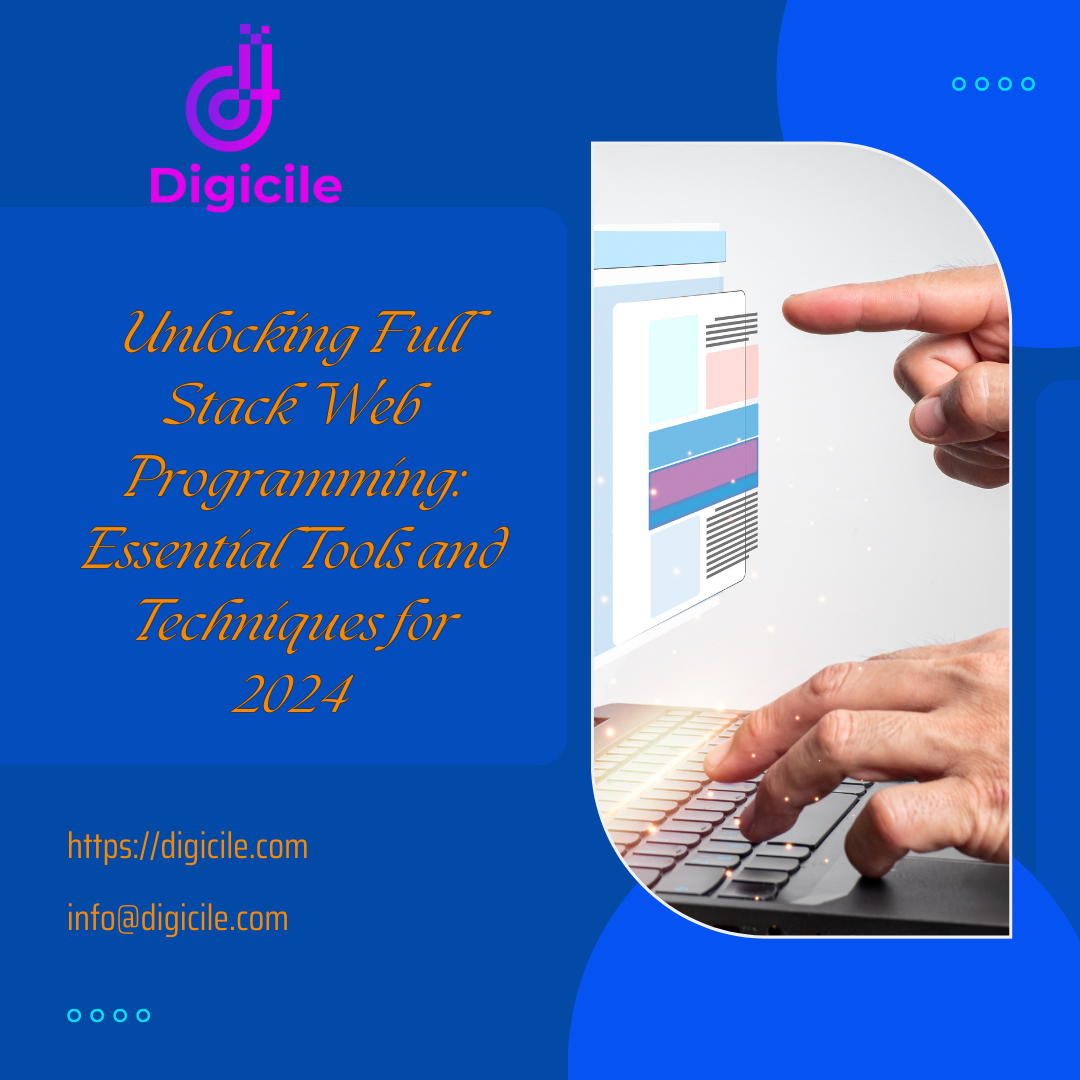Full stack web programming encompasses the mastery of both front-end and back-end development, enabling developers to create comprehensive and dynamic web applications. As we look ahead to 2024, understanding the essential tools and techniques in full stack web programming is crucial for staying competitive and effective in the industry. This guide explores key tools, techniques, and best practices that full stack developers should leverage to excel in their roles.
Front-End Development Tools and Techniques
1. HTML/CSS Frameworks
- Bootstrap: A popular CSS framework for responsive and mobile-first web development.
- Tailwind CSS: A utility-first CSS framework that allows for rapid UI development with customizable components.
- CSS Preprocessors: Tools like Sass and Less enhance CSS capabilities with variables, mixins, and nesting.
2. JavaScript Libraries and Frameworks
- React.js: A JavaScript library for building user interfaces, known for its component-based architecture and virtual DOM.
- Angular: A comprehensive framework by Google for building dynamic web applications with TypeScript.
- Vue.js: A progressive JavaScript framework for building UIs and single-page applications.
3. Responsive Design and Accessibility
- Media Queries: CSS features that enable responsive design for various screen sizes.
- Accessibility Guidelines: Implementing WCAG (Web Content Accessibility Guidelines) to ensure inclusive user experiences.
Back-End Development Tools and Techniques
1. Server-Side Languages and Frameworks
- Node.js: A JavaScript runtime environment for server-side applications, leveraging event-driven architecture.
- Python (Django, Flask): Versatile language and frameworks for web development, known for readability and scalability.
- Ruby on Rails: A web application framework written in Ruby, emphasizing convention over configuration.
2. Database Management Systems
- MySQL: An open-source relational database management system (RDBMS) known for performance and scalability.
- MongoDB: A NoSQL database that stores data in flexible, JSON-like documents, suitable for handling unstructured data.
3. API Development and Integration
- RESTful APIs: Architectural style for designing networked applications, facilitating data communication between client and server.
- GraphQL: A query language and runtime for APIs that enables clients to request precise data, reducing over-fetching and under-fetching.
DevOps and Deployment Practices
1. Version Control Systems
- Git: A distributed version control system for tracking changes in source code during software development.
2. Continuous Integration and Continuous Deployment (CI/CD)
- Jenkins, Travis CI, CircleCI: Tools for automating the testing and deployment of code changes, ensuring software quality and reliability.
3. Containerization and Orchestration
- Docker: A platform for developing, shipping, and running applications in containers for consistency across environments.
- Kubernetes: An open-source system for automating the deployment, scaling, and management of containerized applications.
Emerging Technologies and Best Practices
1. Microservices Architecture
- Decomposing applications into smaller, independent services for easier development, deployment, and scalability.
2. Serverless Computing
- Building and deploying applications without managing infrastructure, reducing operational costs and increasing scalability.
3. AI and Machine Learning Integration
- Leveraging AI and machine learning to enhance application functionality, automate tasks, and provide personalized user experiences.
Conclusion
Mastering full stack web programming in 2024 requires proficiency in a diverse set of tools, techniques, and best practices across front-end and back-end development, database management, DevOps, and emerging technologies. By embracing these essential tools and techniques, full stack developers can build scalable, efficient, and innovative web applications that meet the demands of today’s digital landscape. Stay updated with the latest advancements and best practices to unlock the full potential of full stack web programming in the years ahead.






